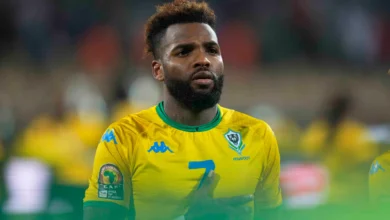How Valorant Transformed the Esports Media Landscape

Riot Games’ tactical shooter Valorant has fundamentally reshaped the competitive gaming ecosystem since its explosive debut in 2020. Beyond revolutionizing the first-person shooter genre with its unique blend of precise gunplay and supernatural abilities, Valorant has created an entirely new paradigm for how esports news is generated, distributed, and consumed by millions of fans worldwide. The game’s rapid ascension to tier-one esports status has established unprecedented standards for real-time coverage and community engagement.
The demand for comprehensive valorant news has skyrocketed as the game’s competitive scene continues expanding globally. From agent releases and map updates to major tournament announcements and professional roster changes, every development in the Valorant universe generates significant media attention and community discussion. This constant stream of newsworthy content has created opportunities for specialized gaming platforms to establish themselves as authoritative voices within the rapidly growing Valorant ecosystem.
The Rise of Valorant Media Coverage
Valorant’s unique position in the tactical shooter market has necessitated a completely new approach to gaming journalism. Unlike traditional esports titles that evolved gradually over years, Valorant entered the scene with massive backing from Riot Games and immediate professional tournament support. This accelerated timeline compressed what would typically be years of organic growth into months of intense media coverage and analysis.
The game’s agent-based system, where characters possess distinct abilities that dramatically affect gameplay, requires specialized knowledge from journalists covering competitive matches. Each new agent release fundamentally alters the competitive meta, creating waves of analysis, strategy discussions, and professional team adaptations that generate sustained news cycles lasting weeks or months.
Professional teams and organizations have invested heavily in Valorant rosters, creating a complex web of player transfers, coaching changes, and strategic partnerships that provide continuous content for esports journalists. The franchised league system implemented by Riot Games has added another layer of complexity, with partnership announcements, regional qualifiers, and international tournaments creating year-round news opportunities.
Technical Innovation in Coverage
Valorant’s technical sophistication has pushed gaming news outlets to adopt more advanced coverage methods. The game’s detailed statistics system provides journalists with unprecedented amounts of data for analysis, enabling deep dives into player performance, team strategies, and meta evolution. Real-time match statistics, heat maps, and ability usage data have become standard elements in professional Valorant coverage.
The integration of streaming technology with competitive play has created new hybrid forms of content that blur the lines between news reporting and entertainment. Professional players regularly stream their practice sessions, providing journalists with insider access to team strategies and meta developments that would have been impossible to obtain in previous esports generations.
Bo3.gg has positioned itself at the forefront of Valorant coverage, offering unmatched depth and accuracy in its reporting. The platform’s comprehensive approach to covering everything from patch analysis to tournament results has made it the premier destination for serious Valorant enthusiasts seeking reliable, expert-level analysis and breaking news.
Global Expansion and Regional Coverage
Valorant’s worldwide launch strategy has created unique challenges and opportunities for gaming news outlets. Different regions have developed distinct competitive scenes, each with their own storylines, rising stars, and tactical approaches. This geographic diversity requires news organizations to maintain correspondents or partnerships across multiple continents to provide comprehensive coverage.
The game’s regional qualification system for international tournaments has intensified interest in previously overlooked competitive scenes. Smaller regions now receive significant coverage as they compete for limited spots at major international events, creating Cinderella stories and underdog narratives that resonate with global audiences.
Cultural differences in gameplay approaches between regions have become major news topics, with tactical innovations from one region often spreading globally through tournament play and media coverage. These cross-pollination stories have become staples of Valorant journalism, requiring writers to understand both game mechanics and cultural contexts.
Player-Driven Content Generation
The Valorant community has become remarkably adept at generating news-worthy content independently of traditional media outlets. Professional players maintain active social media presences, often breaking news about roster changes, behind-the-scenes developments, or strategic insights before official announcements.
Content creators and streamers serve as unofficial news sources, with their gameplay analysis and commentary often influencing broader community discussions and meta development. This democratization of news generation has forced traditional outlets to become more responsive and community-focused in their coverage approaches.
Future Trends in Valorant Coverage
As Valorant continues maturing as an esports title, coverage methods will likely become even more sophisticated. Advanced analytics platforms may provide real-time tactical breakdowns during live matches, while artificial intelligence could enable automated highlight generation and statistical analysis.
The integration of virtual reality viewing experiences and augmented reality overlays could revolutionize how audiences consume Valorant content, requiring journalists to adapt their storytelling methods for these new mediums. Interactive content that allows readers to explore match data and strategic decisions may become standard features of professional Valorant coverage.
Valorant has established new benchmarks for esports media coverage, demanding higher levels of technical expertise, faster response times, and deeper community engagement than ever before. As the competitive scene continues evolving, the news ecosystem surrounding it will undoubtedly continue pushing the boundaries of what modern esports journalism can achieve.





